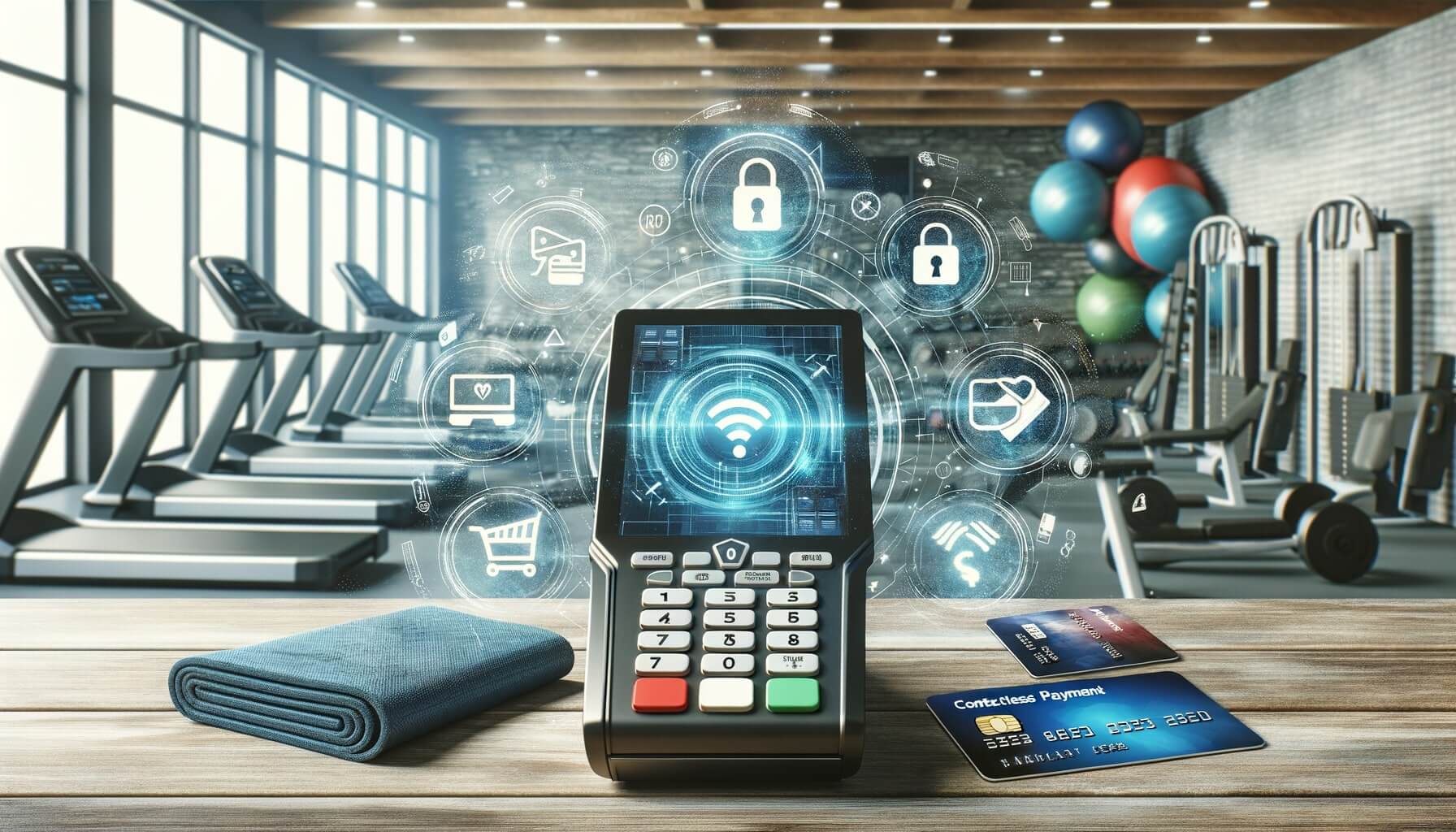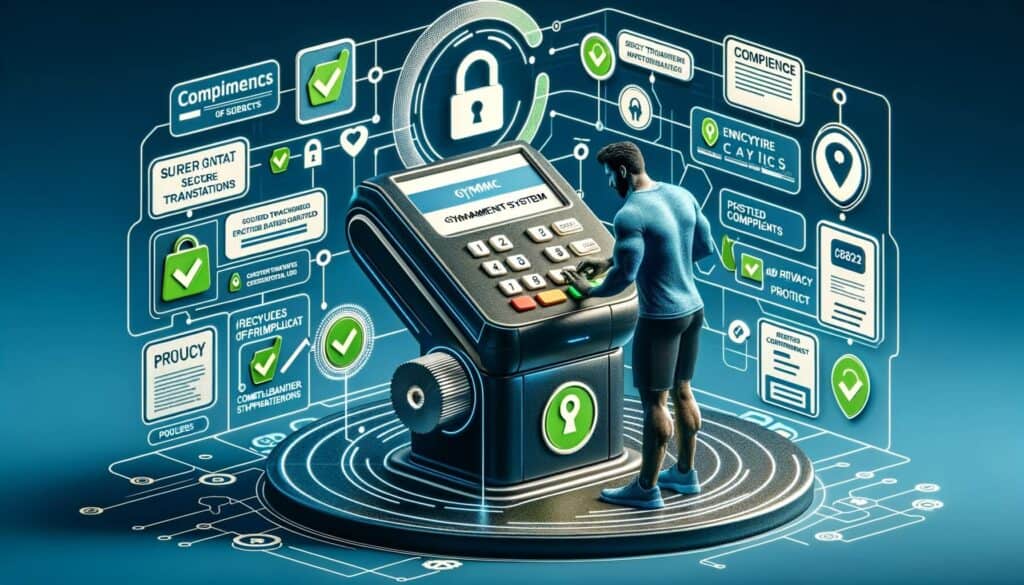
By Amelie Bowen April 14, 2025
In today’s digital age, having a reliable and efficient gym payment system is crucial for the success of any fitness facility. A gym payment system allows gym owners to streamline their financial operations, improve customer experience, and ensure smooth transactions. This comprehensive guide will walk you through the process of setting up a gym payment system, covering everything from choosing the right system to troubleshooting common issues.
Choosing the Right Gym Payment System: Factors to Consider

When selecting a gym payment system, there are several factors to consider to ensure it meets the specific needs of your gym. Here are some key factors to keep in mind:
1. Payment Processing Fees: Different payment systems charge varying fees for processing transactions. It’s important to compare these fees and choose a system that offers competitive rates without compromising on quality.
2. Integration with Gym Management Software: If you already have a gym management software in place, it’s crucial to choose a payment system that seamlessly integrates with it. This integration will allow for efficient management of memberships, class bookings, and other administrative tasks.
3. Payment Methods: Consider the payment methods your gym wants to offer. Whether it’s credit/debit cards, mobile payments, or online transfers, ensure that the payment system supports these options.
4. Security and Compliance: Look for a payment system that prioritizes security and compliance with industry standards. This will protect your gym and your members’ sensitive financial information from potential breaches.
Setting Up a Gym Payment System: Step-by-Step Guide
Now that you understand the factors to consider, let’s dive into the step-by-step process of setting up a gym payment system:
Step 1: Research and Compare Payment Systems
Start by researching different gym payment systems available in the market. Look for reviews, ratings, and testimonials from other gym owners to gauge their experiences. Compare the features, pricing, and customer support offered by each system.
Step 2: Choose a Payment System
Based on your research, select the payment system that best aligns with your gym’s needs and budget. Consider the factors mentioned earlier, such as payment processing fees, integration capabilities, and security features.
Step 3: Sign Up and Create an Account
Once you’ve chosen a payment system, sign up and create an account. Provide the necessary information about your gym, including its name, address, and contact details. This will allow the payment system to set up your account and provide you with the required credentials.
Step 4: Configure Payment Settings
After creating an account, configure the payment settings according to your gym’s requirements. Set up the accepted payment methods, pricing plans, and any additional fees or discounts you offer. This step ensures that your payment system is tailored to your gym’s specific needs.
Step 5: Integrate with Gym Management Software
If you have a gym management software in place, integrate it with the payment system. This integration will enable seamless synchronization of member data, class schedules, and payment information. It will also automate tasks such as membership renewals and class bookings.
Step 6: Test the System
Before going live, thoroughly test the payment system to ensure it functions smoothly. Process test transactions using different payment methods to verify that payments are processed correctly and receipts are generated accurately.
Step 7: Train Staff and Communicate with Members
Train your staff on how to use the new payment system effectively. Ensure they understand the process of accepting payments, issuing refunds, and handling any technical issues that may arise. Additionally, communicate with your members about the new payment system, explaining its benefits and addressing any concerns they may have.
Selecting the Payment Methods for Your Gym

When setting up a gym payment system, it’s essential to offer a variety of payment methods to cater to the preferences of your members. Here are some popular payment methods to consider:
1. Credit/Debit Cards: Accepting credit and debit cards is a must for any gym payment system. It provides convenience for members and allows for quick and secure transactions.
2. Mobile Payments: With the rise of mobile wallets and payment apps, offering mobile payment options like Apple Pay or Google Pay can attract tech-savvy members who prefer using their smartphones for transactions.
3. Online Transfers: Integrating your payment system with online banking platforms allows members to transfer funds directly from their bank accounts. This option is particularly useful for those who prefer not to use credit cards or mobile payments.
4. Cash Payments: While digital payment methods are becoming increasingly popular, some members may still prefer paying in cash. Ensure your payment system has the capability to accept and track cash payments accurately.
Integrating a Gym Management Software with the Payment System

Integrating your gym management software with the payment system is crucial for efficient operations and member management. Here’s how to do it:
1. Research Compatible Systems: Look for gym management software that offers integration capabilities with popular payment systems. Check if the payment system you’ve chosen is compatible with your gym management software.
2. Enable Integration: Once you’ve confirmed compatibility, enable the integration by following the instructions provided by both the gym management software and the payment system. This usually involves entering API keys or configuring settings within both systems.
3. Synchronize Member Data: After integration, ensure that member data, such as contact information, membership details, and payment history, is synchronized between the two systems. This synchronization will allow for accurate reporting and streamlined member management.
4. Automate Membership Renewals: With the integration in place, automate membership renewals by setting up recurring payment schedules. This will save time and effort for both your staff and members, ensuring memberships are renewed seamlessly.
Ensuring Security and Compliance in Your Gym Payment System

Security and compliance are paramount when handling financial transactions. To ensure the safety of your gym and your members’ data, follow these best practices:
1. PCI Compliance: Payment Card Industry Data Security Standard (PCI DSS) compliance is essential for any gym payment system. Ensure that your payment system is certified as PCI compliant to protect against data breaches and fraud.
2. Encryption: Implement strong encryption protocols to secure sensitive data during transmission and storage. This includes encrypting credit card information, member details, and any other personal data collected during the payment process.
3. Tokenization: Consider using tokenization, a process that replaces sensitive data with unique tokens. This ensures that even if a breach occurs, the stolen data is useless to hackers.
4. Two-Factor Authentication: Enable two-factor authentication for staff members accessing the payment system. This adds an extra layer of security by requiring a second form of verification, such as a unique code sent to their mobile device.
Managing Recurring Payments and Memberships
Recurring payments and memberships are common in the fitness industry. Here’s how to effectively manage them using your gym payment system:
1. Set Up Recurring Payment Options: Configure your payment system to offer recurring payment options for memberships and other services. This allows members to choose automatic payments, ensuring their memberships remain active without manual intervention.
2. Define Membership Terms: Clearly define the terms and conditions of your memberships, including the duration, pricing, and cancellation policies. Ensure that your payment system reflects these terms accurately.
3. Automated Renewals: Automate membership renewals by setting up recurring payment schedules. This eliminates the need for manual follow-ups and reduces the risk of memberships expiring unintentionally.
4. Member Notifications: Use your payment system to send automated notifications to members before their memberships are due for renewal. This serves as a reminder and encourages timely payments.
Offering Additional Payment Options for Gym Services
In addition to memberships, gyms often offer additional services such as personal training sessions, group classes, and retail products. Here’s how to offer additional payment options for these services:
1. Class Bookings: If your gym offers group classes, integrate your payment system with a class booking feature. This allows members to book and pay for classes in advance, ensuring their spot is reserved.
2. Package Deals: Create package deals for services like personal training sessions or spa treatments. Your payment system should allow members to purchase these packages and track their usage.
3. Retail Sales: If your gym sells retail products like apparel, supplements, or accessories, enable your payment system to process these sales. This ensures a seamless checkout experience for members purchasing these items.
4. Gift Cards: Consider offering gift cards that can be purchased through your payment system. This allows members to gift gym memberships or services to their friends and family, promoting customer loyalty and attracting new members.
Troubleshooting Common Issues with Gym Payment Systems
Despite careful planning and implementation, issues with gym payment systems can still arise. Here are some common issues and how to troubleshoot them:
1. Payment Declines: If a member’s payment is declined, ensure that the card details entered are correct. Advise the member to contact their bank to resolve any issues with their card or account.
2. Technical Glitches: In case of technical glitches, such as system downtime or slow processing, contact your payment system provider’s customer support immediately. They will guide you through the troubleshooting process and resolve the issue promptly.
3. Refunds and Cancellations: If a member requests a refund or cancellation, follow your gym’s refund policy and initiate the process through your payment system. Ensure that the refund is processed correctly and the member is notified.
4. Data Discrepancies: Regularly reconcile your gym management software with your payment system to identify any data discrepancies. This includes checking for missing payments, incorrect membership statuses, or any other inconsistencies.
FAQs
Q1. What are the benefits of using a gym payment system?
A1. A gym payment system offers benefits such as streamlined financial operations, improved customer experience, automated membership renewals, and enhanced security for sensitive financial information.
Q2. Can I accept cash payments with a gym payment system?
A2. Yes, many gym payment systems allow you to accept and track cash payments. Ensure that your chosen system has this capability if you want to offer cash payment options.
Q3. How can I ensure the security of my gym payment system?
A3. To ensure security, choose a payment system that is PCI compliant, implement strong encryption protocols, use tokenization to protect sensitive data, and enable two-factor authentication for staff members.
Q4. Can I integrate my gym management software with any payment system?
A4. Not all gym management software is compatible with every payment system. Research and choose a payment system that offers integration capabilities with your specific gym management software.
Q5. What should I do if I encounter technical issues with my gym payment system?
A5. Contact your payment system provider’s customer support immediately. They will guide you through the troubleshooting process and resolve any technical issues you may be facing.
Conclusion
Setting up a gym payment system is a crucial step in ensuring the smooth financial operations of your fitness facility. By choosing the right payment system, integrating it with your gym management software, and prioritizing security and compliance, you can streamline transactions, manage memberships effectively, and offer additional payment options for gym services. By following the step-by-step guide and troubleshooting common issues, you can create a seamless payment experience for your members, ultimately contributing to the success of your gym.